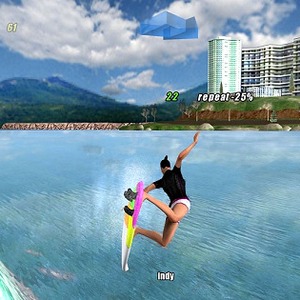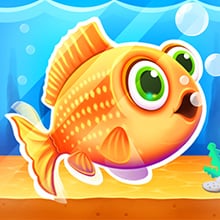What are Water Games?
Water games are a genre of games where the gameplay, setting, or theme revolves around water environments. These games often feature aquatic landscapes, underwater exploration, and water-based challenges. They offer players a unique and immersive experience that taps into the mysterious and dynamic nature of water. Water games can span various genres, including adventure, simulation, sports, and even horror, with water as a central element influencing the mechanics, atmosphere, and storytelling.
In these games, players might navigate underwater worlds, piloting submarines, exploring sunken cities, or interacting with marine life.
Water games also explore the aesthetic beauty and danger of water environments. They can evoke a sense of tranquility and awe as players dive into deep oceans or navigate serene rivers. And water games also create tension and suspense when encountering underwater threats or surviving in hostile aquatic conditions. This genre of games allows for creative and varied gameplay experiences, making it a popular and enduring theme in the video game industry.
How Many Types Of Water Games?
Water games encompass a wide range of types, each offering different gameplay experiences and focusing on various aspects of aquatic environments. These can generally be categorized into several distinct types:
Underwater Exploration Games: These games focus on the exploration of underwater environments, often emphasizing discovery, survival, and the beauty of the ocean. Players dive into vast underwater worlds, uncovering secrets, collecting resources, and sometimes facing aquatic dangers. The gameplay is often slow-paced, allowing players to immerse themselves in the detailed marine ecosystems.
Water Sports Games: This type includes games that simulate water-based sports such as jet skiing, surfing, sailing, or water polo. These games often prioritize fast-paced action, reflexes, and mastering the dynamics of water physics.
Adventure and Action Games: In this type, water is a significant element, but the gameplay includes broader adventure or action components. Water in these games often adds complexity to the gameplay, requiring players to adapt to different environmental challenges.
Simulation Games: These games aim to replicate real-life water environments or activities with a high degree of realism. Fishing games are a common subgenre here, where players simulate the experience of fishing in lakes, rivers, or oceans. Other simulation games might focus on managing marine life, operating submarines, or even building and managing aquatic theme parks.
Horror and Survival Games: Some water games fall into the horror and survival genres, where water environments are used to create tension and fear. In these games, water is often depicted as a hostile and dangerous element, with players needing to navigate treacherous waters, avoid deadly creatures, and manage limited resources.
Puzzle and Strategy Games: In this category, water plays a critical role in solving puzzles or in the strategic management of resources. Strategy games might involve managing water resources, controlling floods, or using water as a tactical element in gameplay.
These types of water games demonstrate the versatility and appeal of water as a thematic and gameplay element, allowing developers to craft diverse experiences that range from relaxing and contemplative to thrilling and intense.









 Dentist Games
Dentist Games Bejeweled Games
Bejeweled Games Golf Games
Golf Games Platform Games
Platform Games Flappy Bird Games
Flappy Bird Games Airplane Games
Airplane Games Halloween Games
Halloween Games Mermaid Games
Mermaid Games Magic Games
Magic Games Helicopter Games
Helicopter Games Fish Games
Fish Games Maze Games
Maze Games Idle Games
Idle Games Vampire Games
Vampire Games Number Puzzle Games
Number Puzzle Games Fashion Games
Fashion Games